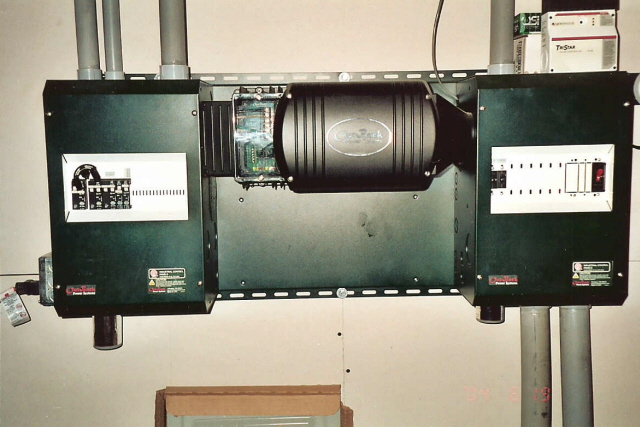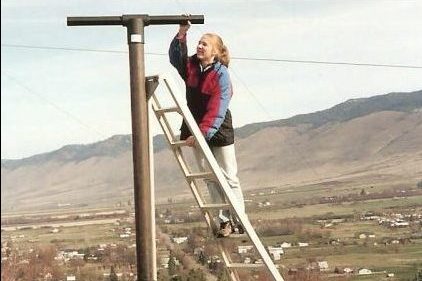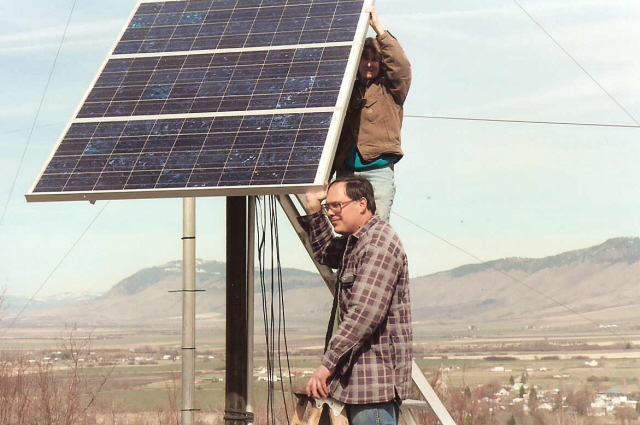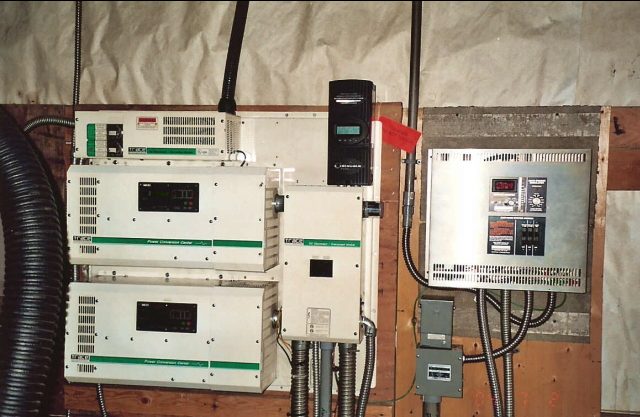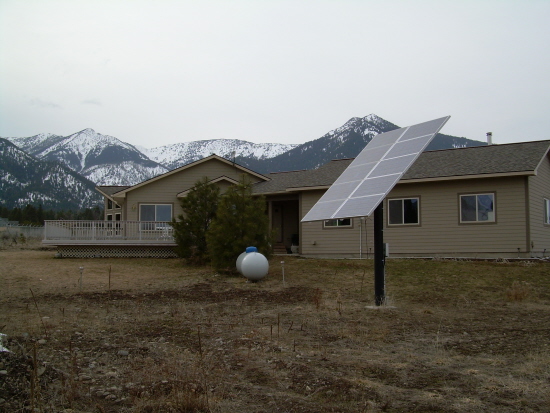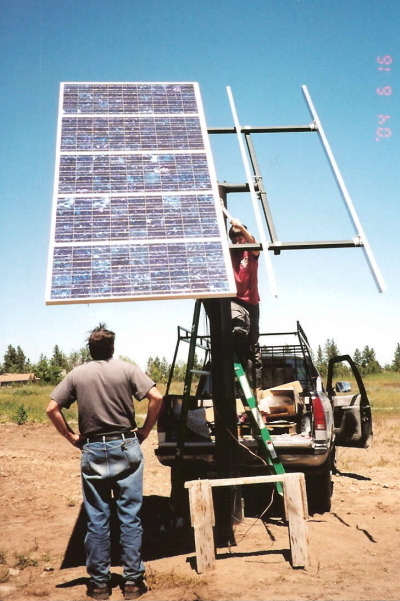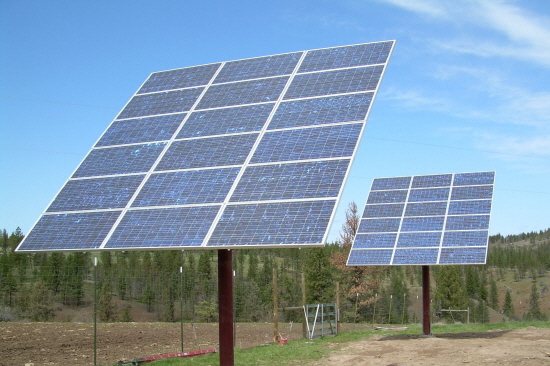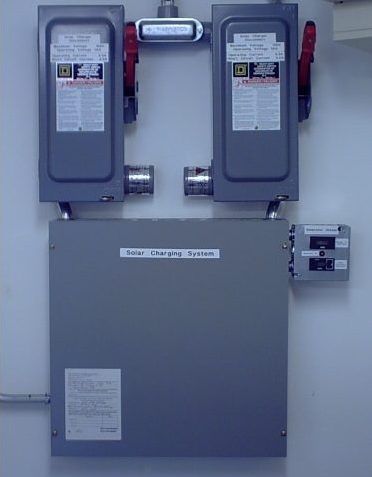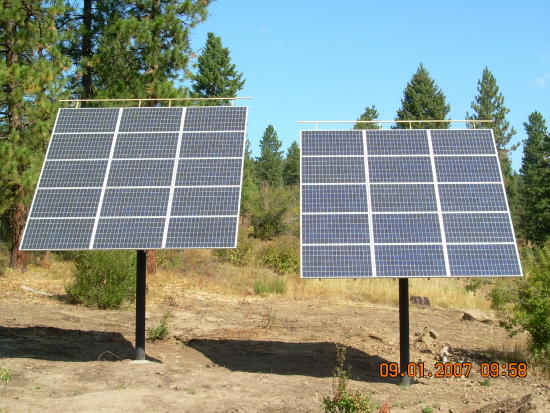Installed in September 2003. This 300-watt array charges batteries to power a weekend cabin. On the right, a single Outback inverter allows the client to run lights, TV, laundry, and miscellaneous small loads. We have sized equipment to allow the option of increasing the size of the system in future years.
Kay and Kent on installation day in March 2004. This PV/battery/generator system powers the high-speed internet system in Cove, OR. Left: Earlier the same day, Lissa Firor begins installing the array support structure. Read a newspaper article about this system.
The first of two tracking arrays was installed in May 2004. Each array is 1250 watts, and the solar system at this home complements the output of a 3000-watt wind turbine. Two trace inverters, a propane generator, and 1100 amp-hours of battery bank complete this home system.
This grid-connected system also has battery storage and serves as a back-up when utility power goes down. Installed in June 2004, the pedestal-mounted fixed array is rated 1250 watts.
Two 3-kW fixed arrays power a ranch system in Eastern Oregon. Two 3600-watt inverters and 800 Amp-hours (at 48 v) of battery bank make up the remainder of this grid-backup system.
Installed in September of 2005, this 600 watt array runs the telephone system for a tiny mountain town. The array, batteries, charging equipment, and switchgear are wired as two separate but identical systems, providing a fully-redundant and thus extremely reliable power system, Interestingly, this system has a positive ground.
A separate shed building supports a roof-mounted array and shelters the batteries, charger, inverter, and switchgear for the power system at a remote mountain cabin.
Each of these pole-mount arrays is 2750 watts, and the rest of the system was designed to allow a third array eventually. This stand-alone system uses a quad Outback FX3048 inverter bank, 24 Rolls 2KS33PS batteries and a 25-kW Generac back-up generator.


